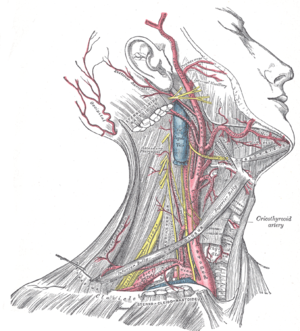Neck Surgery - Pain, Surgical Procedures & Recovery
By Dr. Stuart Gold, M.D., Orthopedic Surgeon & Author
The human neck contains a column of bones called vertebrae extending downward from the base of the skull and connecting with the rest of the spine below. Tissues called ligaments hold these bones together. Between the vertebrae are discs of soft tissue that act as shock absorbers and maintain the proper spacing between the vertebrae. The spinal cord passes through the bones of the spinal column, carrying messages between the brain and the arms and legs. If the proper alignment of the discs and vertebrae is disturbed so that pressure is placed on the nerves going to the spinal cord, pain, numbness, or weakness may result. Since the nerves involved are going to the arms and legs, the pain may be felt in those areas, even though the pressure is in the neck. In severe cases, neck surgery may be needed to correct this problem.

The spinal cord passes through the bones of the spinal column, carrying messages between the brain and the arms and legs. If the proper alignment of the discs and vertebrae is disturbed so that pressure is placed on the nerves going to the spinal cord, pain may result. Since the nerves involved are going to the arms and legs, the pain may be felt in those areas, even though the pressure is in the neck. In severe cases, neck surgery by an orthopedic surgeon may be needed to correct this problem.
Types Of Orthopedic Neck Surgery
There are many different types of neck surgery:
- Anterior cervical discectomy is the removal of part or all of an intervertebral disc. This procedure is performed when the protective outer coating of the disc, called the annulus fibrosis, develops a tear which allows the softer interior portion, the nucleus pulposus, to squeeze out and place pressure on nerves. In some cases, bone spurs may develop which also place painful pressure on nerves. Anterior cervical discectomy can correct these problems by entering through an incision in the front of the neck and removing the disc and/or bone spurs that are causing the problem. Most of the time this procedure is done in conjunction with a fusion (where two or more vertebrae are joined together as one and eliminate the motion they normally have between them).
- Anterior cervical discectomy with fusion is a more involved procedure performed when greater stability of the effected bones is required. The first part of the operation is the same as the simpler procedure. After this, another incision is made and a section of bone taken from the patient's hip or other graft donors and is inserted to encourage the adjacent vertebrae to fuse. In some cases, a metal plate is also inserted to give greater stability. This holds the bones in place during recovery and ensures that the fusion is good and solid.
- There is a less involved version of this procedure called minimal access discectomy, which enters through the back of the neck. If a fusion is not needed this approach can provide excellent decompression of a pinched nerve.
- Corpectomy is the removal of one or more vertebrae and the discs above and below it. This procedure is performed in cases where the area of compression cannot be addressed by anterior cervical discectomy alone, a condition caused by a narrowing of the spinal canal from bone spurs or the pressure of the ligament behind the vertebrae. When corpectomy is performed, it is necessary to insert a bone graft to reconstruct the spine. A metal plate may also be necessary for additional stability.
- Foraminotomy is a procedure used in cases where the root of a nerve is being pinched at the spot where it exits the spinal canal. Thickening of the ligaments, bone spurs or protruding discs can all make this space get narrower, resulting in pressure causing stiffness, tingling or numbness in shoulders, arms and hands. Foraminotomy relieves the pressure at the base of the nerve.
What Are The Common Surgical Outcomes From Neck Surgery?
All of these procedures are routinely performed with great success, and recovery rates are excellent. In most cases, there is little or no decrease in mobility after recovery. Even if there has been fusion, the other vertebrae will usually experience an increase in mobility to compensate.
Neck surgery is more predictable then low back surgery. In more than 90% of patients, there is significant pain relief from neck surgery. Even in cases where more extensive decompression is needed, the success rate is usually above 80 %. However, patients should understand that complete relief of all pain might be an unrealistic goal. In cases of neck pain, the decrease may be about 70% to 85%. In cases of shoulder or arm pain, the decrease may be more like 90% to 95%.
As with all surgical procedures, the severity of the original problem will determine the probability of success, with procedures involving multiple discs having a correspondingly lower rate of full recovery. However, even in these cases, the relief of pain should be substantial and the odds of a favorable recovery are very good.
> To learn more about neck surgery by an orthopedic surgeon, please click here.



